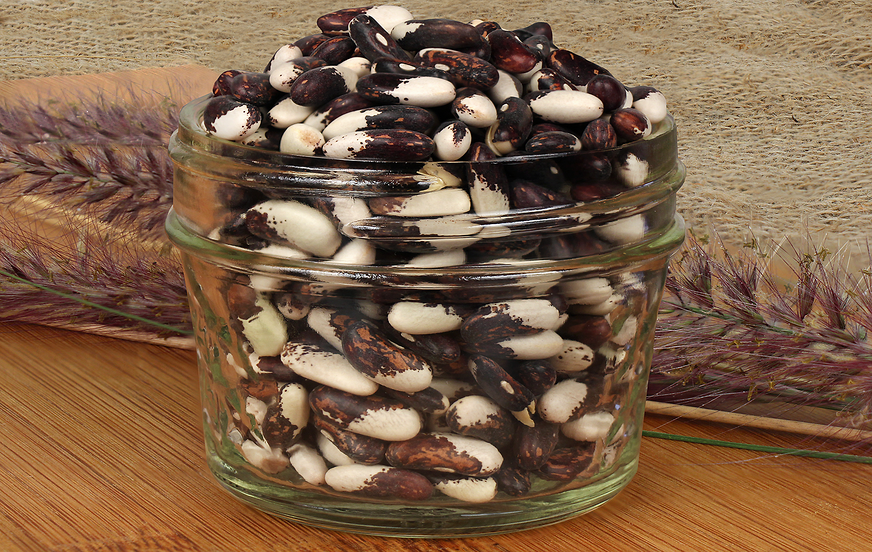


Dried Appaloosa Beans
Estimated Inventory, lb : 0
Description/Taste
Appaloosa Beans are about ½ inch long, with one half of the bean being ivory and the other end freckled with purple and brown. Mildly flavored and a firm texture makes this bean comparable to a kidney or pinto bean. Use in applications like chili, refried or stews.
Seasons/Availability
Check for availability.
Current Facts
Approximately fifteen pounds of beans are eaten each year by the average American, and this consumption is increasing steadily. Also known as pulses, legumes are the mature seeds that grow inside pods. These seeds are called beans, peas, and lentils. Some of these peas are called beans, and some of the beans are called peas, but lentils are always called lentils. An interesting fact for the old bean is that the garbanzo bean, which is also known as the chick-pea, is both a pea and a bean, and so is called a legume. Of the many types of beans consumed in America, only a few varieties are eaten fresh. Fresh beans, even though they belong to a number of plant species, can be classified into two broad categories, which are beans with edible pods, and beans that are shelled.
Nutritional Value
High in protein, one cup of cooked beans supplies about one-third of the RDA for protein. High in soluble fiber, beans are an excellent source of vitamins and minerals, including B-complex vitamins, potassium, iron, zinc, plus other essential minerals. Eating five daily servings of vegetables and fruits lowers the chances of cancer. A recent study found that eating nine or ten daily servings of vegetables and fruits, combined with three servings of low-fat dairy products, were effective in lowering blood pressure.
Applications
Soak beans overnight or several hours; rinse; place in a large cooking pot and cover with water. Bring to a boil for three minuites; reduce heat and simmer covered for fifty minutes or until tender. One cup of dried beans yields two and one-half cups cooked beans. These beans are ideal for refried beans. Enhance flavor with spices such as sage and rosemary. Store dried beans in an airtight container in a cool place.
Ethnic/Cultural Info
Beans are an important ingredient of every existing cuisine. The bean-eating Pilgrims followed strict religious beliefs which included there was to be no cooking done on the Sabbath. The clever Pilgrims devised a bean pot that baked overnight and would then be ready to eat for Sunday's supper! A book, "The Anatomy of Melancholy" by Robert Burton was published in 1621 that proposed sixty-four remedies for gas produced from eating beans.
Geography/History
Beans have been eaten for more than 10,000 years, and nearly seventy different varieties of legumes exist. The Pilgrims were original bean eaters in Boston, Massachusetts, which was known as "Beantown." The hilly region of the Pacific Northwest is one of the world's most productive areas for growing lentils, dry peas, and chick-peas. The Palouse, where Oregon, Idaho, and Washington states come together, offers fertile volcanic soil, a gentle sun, and lots of nourishing spring moisture, and thus produces rich crops of beans. In French, the name Palouse means "green lawn." This area produces some 500 million pounds of lentils and dry peas annually. Seventy-five percent of this amount is exported to ninety countries around the world. Bean crops actually replenish the soil with nitrogen, and when planted in rotation with barley and wheat, almost no fertilizer is needed.




